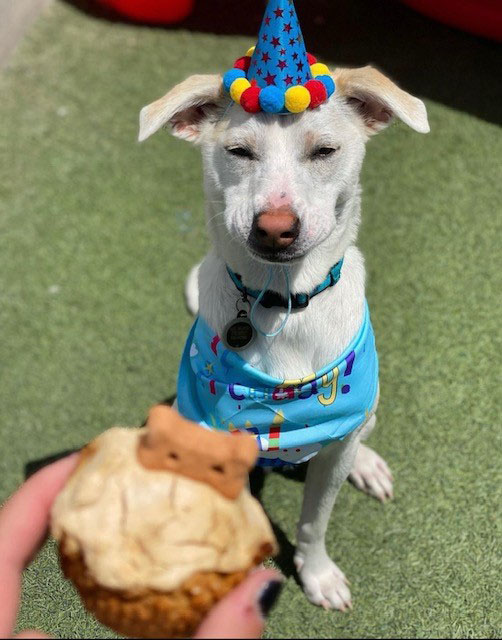FORT COLLINS, COLO. — At the outset of her academic career at Colorado State University, Jennifer Martin, Ph.D., would never have predicted she’d spend so much time focused on pet food. But as her knowledge of meat science grew, she came to realize the many ways human food and pet food intersected.
“I often didn’t think of the pet food industry as a potential career,” she explained. “However, the opportunities within the industry are tremendous and utilize so many different skillsets — including those of meat scientists.”
In the following Q&A, Martin shares how her commitment to teaching paired with a passion for pets has provided her with opportunities beyond the borders of academia.
PFP: How did you get your start in the pet industry, and how did that experience lead you to where you are now?
Martin: My introduction to the pet food industry came during my time as a graduate student studying meat science and has continued during my professional career as a faculty member. Admittedly, as a meat scientist, I often didn’t think of the pet food industry as a potential career, however, the opportunities within the industry are tremendous and utilize so many different skillsets — including those of meat scientists. Today, as a faculty member, I try to make sure my students are exposed to not only the science and technology utilized in the pet food industry, but also consider careers in it as well.
PFP: What has been your biggest challenge — personal or professional — related to your work in the pet industry?
Martin: This is a great question. My biggest professional challenge has been challenging myself and colleagues to get rid of the assumptions we often have about the pet food industry itself. It’s often easy to think of the pet food industry as a “second-class citizen” compared to the human food industry. However, I’ve felt that the opportunities for innovation in the pet food industry are immense and often I find them more exciting than human foods. It may not have the glitz and glamour from the outset, but the work happening in the pet food space is truly remarkable and fun to be a part of.
PFP: Tell me about a professional accomplishment in the pet industry that you are proud of.
Martin: Colorado State University was fortunate to receive support from the Fats and Protein Research Foundation to establish the Pet Food Alliance in 2016. This industry-driven organization focuses on bringing members of the pet food and rendering industries together to ideate and explore innovative solutions for challenges that impact both industries. We started the organization with less than 20 members and an idea, but since its inception it has grown to over 200 active members representing a spectrum of organizations involved in the pet food and rendering industries. Seeing the organization serve as a conduit for productive conversations that have led to implementable solutions for real-world problems is a remarkable accomplishment and I’m honored to have played a role in it.
PFP: What is top of mind for you and/or your business in the industry right now?
“I see a tremendous opportunity for the pet food and rendering industries to lean into the roles they play in a sustainable food system,” said Jennifer Martin.
Martin: For me, I see a tremendous opportunity for the pet food and rendering industries to lean into the roles they play in a sustainable food system. Just as we’ve seen in human foods, pet owners are increasingly interested in the impact their choices have on the environment and a sustainable future. I think the rendering industry is a key member of this conversation and I’m hopeful that organizations like the Pet Food Alliance can spur even more collaborations and innovative partnerships between both industries in this topic area.
PFP: If you could pick three trends influencing the industry today, which are the most important and why?
Martin: Alternative proteins — This conversation keeps expanding and I’m curious to see how the pet food sector will be impacted by cell-cultivated meats in the future.
Sustainable production — Obviously this is an important topic to consumers, but the nuance between its importance in human foods compared to pet foods is interesting. I’m curious how inflation and a tighter protein market will influence demand and if we will see increased price sensitivity for these products in the future.
Workforce — This is probably less of a well-known “hot topic,” but it’s one that’s critical. These challenges have been plaguing the food system for a long time and will only continue to be a challenge. I’m curious to see how the industry responds.
PFP: What is something about the pet industry that people outside of the industry may not realize?
Martin: There is an immense amount of innovation and commitment to quality and safety in the industry. I am consistently in awe of the innovation and thoughtfulness that goes into creating safe, high-quality and customer-oriented products in the pet food space. I am continuously inspired by the industry members I get to work and interact with. I wish that people outside of the industry understood the extreme care and caution they put into making high-quality foods for our four-legged companions.
PFP: What advice would you give to other women in this industry?
Martin: Lift up other women. The number of women in pet food has grown and will likely continue to grow. It’s easy for women to look at each other as competition, but it’s so important that senior women in the industry — or other influential women leaders — pursue the ability to share opportunities with junior colleagues.

Jennifer Martin’s dog Mel.
| Source: Jennifer MartinPFP: Just for fun, do you consider yourself a dog person or a cat person? Or, if you have pets of your own, tell us a little bit about them.
Martin: I am a bonafide dog person. My husband and I have a 3 year-old rescue dog named Mel who is my best buddy, even though he was a birthday present for my husband. He’s a great copilot for grocery pick-ups or morning walks and is the ultimate snuggler. He has hunting dog instincts, so he loves to chase rabbits, mice, toads or any other critter in the open spaces around us in Colorado.
In her current role as associate professor in the College of Agricultural Sciences at Colorado State University (CSU), Jennifer Martin, Ph.D., combines her passion for teaching and guiding others with academic collaborations in and out of CSU. She received her bachelor’s, master’s and doctorate degrees from Texas Tech University. Her research interests include a systems-based approach to meat safety and quality. During her tenure at CSU, she helped found the Pet Food Alliance in 2016 through financial support from the Fats and Protein Research Foundation.
Continue reading about other female leaders featured in our Women in the Pet Industry series.



